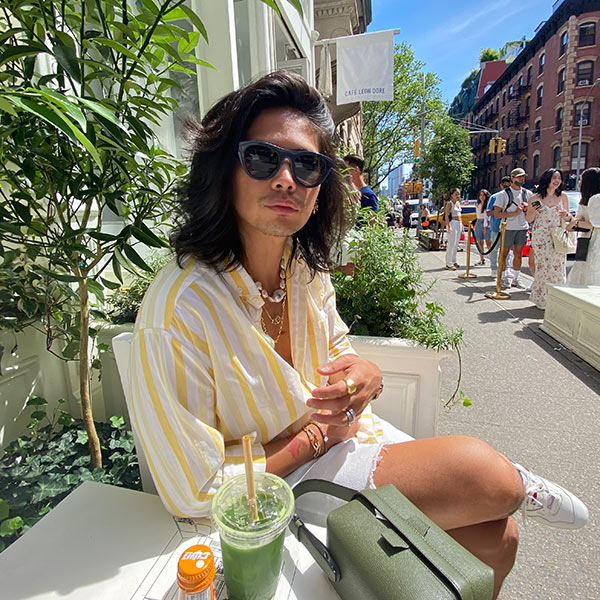
Every Thursday during the pandemic, we’re checking in on members of the jewelry trade in an attempt to glean shareable tips and tricks for doing business—and reentering our “normal” lives, both professionally and personally—during the COVID-19 crisis.
Today we hear from George Inaki Root, CEO and creative director of Milamore, a fine jewelry line designed in New York and handcrafted in Japan.
JCK: Hello, George! Thanks for chatting with us from Paris. Are you traveling for business or pleasure?
George Inaki Root: Both, actually. I just got here from London, where I opened [a pop-up shop] at Pantechnicon [a retailer centering on products and food from Japan and the Nordics], and now I’m having meetings in Paris.
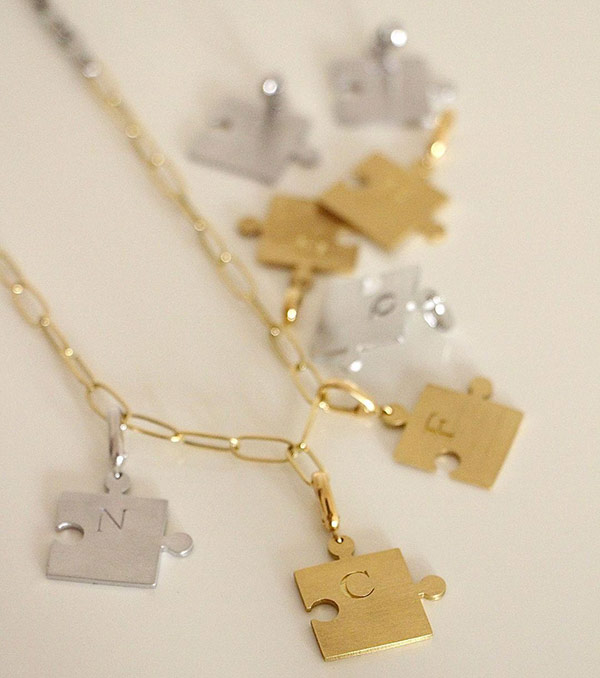
You launched Milamore in 2019 as an international jewelry brand, so the pandemic must have been difficult.
It was really hard because I have my retail store in Tokyo, but we were able to maintain our business—in fact, the business in Japan is growing. I have a Japanese passport and I [flew from New York] to Japan three times last year. I had to quarantine for 10 days each time, but I went because otherwise my employees would lose their jobs.
Did you ever consider moving your production out of Japan?
I thought about it. As you can imagine, producing in Japan is expensive, and dealing with customs is a nightmare, but I felt a responsibility for preserving Japanese craftsmanship in the jewelry business. Being born in the Philippines and growing up in Japan, I was aware that the craftsmanship [in Japan] is one of the highest in the world. But when you think about jewelry production, it’s Italy, it’s France, it’s America, and China is coming up as well. We have a history of thousands of years, but people don’t really understand the quality.
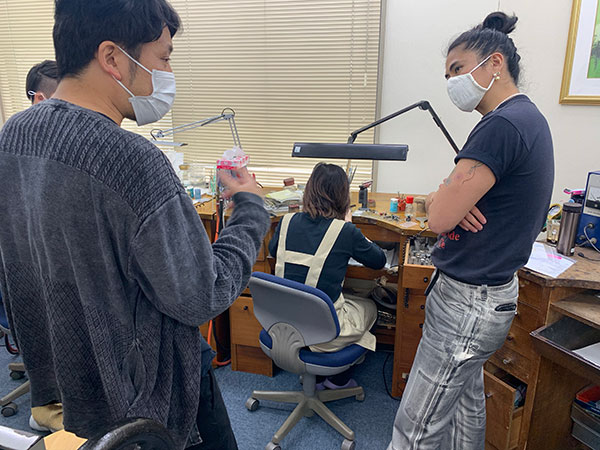
How did you develop your company, which is named in honor of your Spanish-Filipino grandmother, Milagros?
My career before Milamore was in PR and branding, and I was exposed to a lot of heritage brands—I worked with Chanel, Dior, Calvin Klein. The longevity of these houses is phenomenal, and what makes them special, what makes them luxury, is their storytelling. They celebrate craftsmanship, and that’s what I want to do—I want to bring back that hybrid of being modern but also preserving traditions.
You’re often photographed wearing your designs. Has the brand’s “inclusive” nature, as you put it, been helpful this year?
It was not my intention to create a unisex brand. I just wanted to make jewelry that I could wear. The men’s jewelry industry is always [skewed toward] rock ’n’ roll, bold silver pieces. My pieces for men are slightly delicate and for women are slightly bold. I don’t really discriminate to my clients.
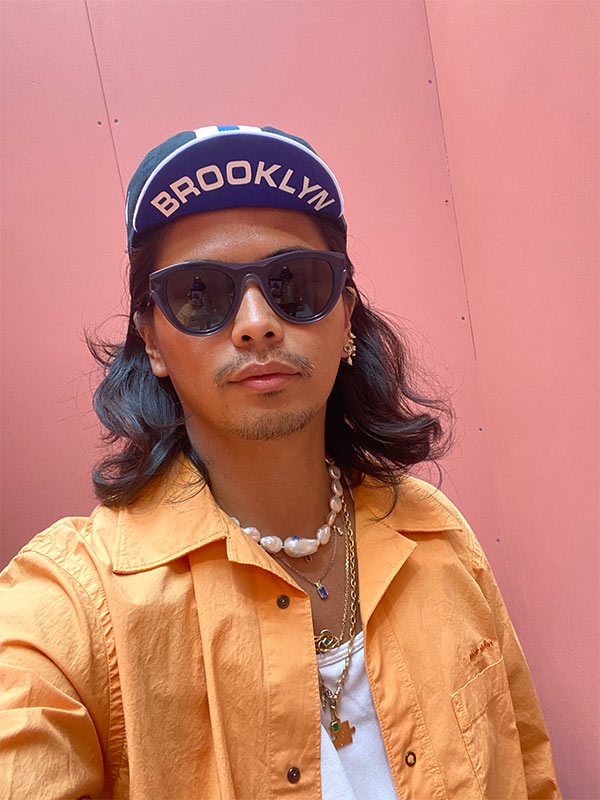
Your jewelry has abstract shapes and intricate angles. Is that a challenge to convey on your website, a tool that’s been crucial to jewelry retailers during the pandemic?
It’s a nightmare to photograph, especially the pieces in my Kintsugi collection, because the design is 360 degrees. People twist their rings, right? The idea of Kintsugi is that whichever angle you wear it is the face of your ring. I didn’t want my jewelry to be sparkly on my website because I want clients to feel the joy of opening the box and appreciating the quality. People say, “Wow, your jewelry looks so much better in person,” and that’s the biggest compliment. The majority of my clients continue to be in Japan, but we’re growing internationally because of the website. One client who lives in Wyoming just spent $30,000 online.
A pop-up message on the website offers concierge delivery in New York City. How is that going?
People really like it. We don’t have a store in New York yet, so if you say, “I want this ring, that necklace, those earrings,” the concierge will bring it to your place, show it, and if you want it, you can buy it on sight. If not, you can return it at no cost.
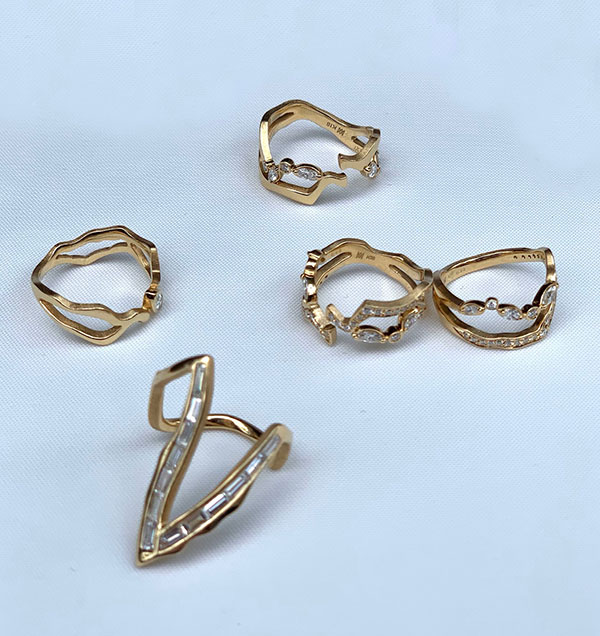
How did the pandemic affect your work as a designer?
I’m such a positive person, so I chose to focus on my collections and think through the direction I want to take for the next 10 to 20 years. I developed a lot of new designs in the Kintsugi collection, which just happened to be introduced at a time when people were finding beauty in brokenness. I live in SoHo, and seeing my neighborhood destroyed this past year was really, really hard. I would spend two weeks [at my home] upstate and come back to the city for five days for meetings, and that experience of staying in New York and commuting upstate made me realize how important humanity is. It made me appreciate everything I have.
In the midst of so much travel, how do you relax?
I like to do kickboxing. I’ve been doing that for 10 years, and it’s kind of like my Zen moment. I also find designing very relaxing. It’s a privilege to have a business I’m so passionate about.
Top: Milamore’s George Inaki Root (all photos courtesy of Milamore)
- Subscribe to the JCK News Daily
- Subscribe to the JCK Special Report
- Follow JCK on Instagram: @jckmagazine
- Follow JCK on X: @jckmagazine
- Follow JCK on Facebook: @jckmagazine







